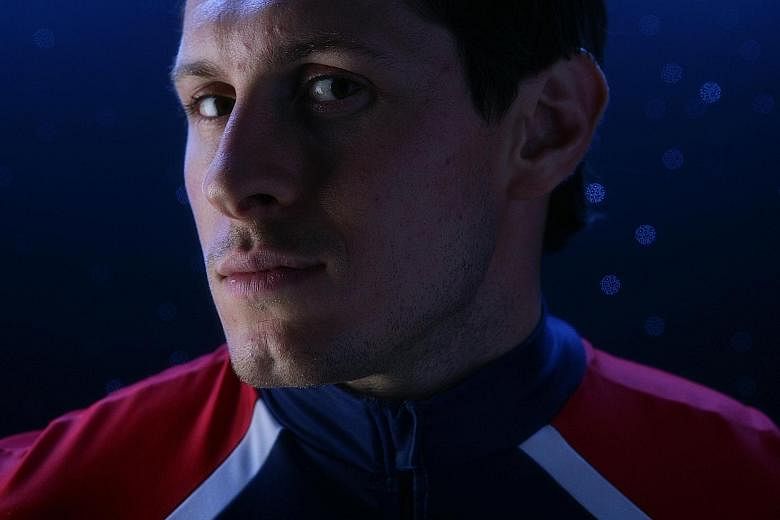NEW YORK • On May 3, Pavle Jovanovic, a former bobsleigher, rigged a chain to a crane he and his brother kept in the shop of their family's metal works in Toms River, New Jersey.
He tied the loose end around his neck and hanged himself.
Jovanovic, an Olympian, was just 43, but experiencing the shakes and tremors often associated with Parkinson's disease. He was also the third elite North American bobsleigher to kill himself in recent years after Adam Wood, 32, in 2013 and Travis Bell, 42, in 2014.
In recent years, an increasing number of athletes, current and retired, in sliding sports, especially bobsleigh and skeleton - a sister sport in which competitors slide headfirst on a small sledge made of metal and carbon fibre - have said they battle chronic headaches, a heightened sensitivity to bright lights and loud noises, forgetfulness and psychological problems.
Only a few hundred people pursue sliding sports seriously in the United States and Canada at any time, which makes the prevalence of these symptoms and the early deaths, which are often related to brain injuries, stark.
For years, the tight-knit sliding sports community has viewed brain injuries as a problem for football and other direct contact sports.
But Jovanovic's deterioration and suicide, so soon after Steven Holcomb's death from an overdose, have forced it to confront difficult questions with uncertain answers.
Brain experts who have studied these athletes say the symptoms most likely stem, at least in part, from years of enduring the notorious crashes, routine head banging, brain-rattling vibrations and strong gravitational acceleration forces that are common in their sports.
The athletes even have a name for the exhausted fog that even a routine run down the track can leave them in. They call it "sledge head", a term that troubles brain experts because they say it has normalised the classic symptoms associated with concussions and mild traumatic brain injuries familiar to those who participate in high-impact sports.
Dr Brian Benson, the chief medical officer for the Canadian Sport Institute in Calgary, Alberta, compares it to shaken baby syndrome, but for adults.
Even on a routine run without a crash, the bobsleigh whips in and out of the tighter turns, and heads slap hard against its fibreglass side.
-
128kmh Speed a bobsleigh can reach when it crashes.
When the 630kg sledges crash, they careen out of control at 128kmh with two or four people aboard.
No one is wearing a seat belt. Heads slam into walls, into other heads and into the sledge itself. Ultimately, everyone slides down the rest of the way, often underneath the vehicle, their helmets grinding along the ice at speeds as fast as 96kmh.
Lugers, who slide feet first and reach the highest speeds, experience some of the same forces, but suffer far fewer concussion-like symptoms, probably because a support strap often prevents their heads from banging into the ice.
While experts believe sliding sports pose significant dangers to the brain, even the leading neuroscientists readily acknowledge how much they do not know.
Dr Robert Stern, director of clinical research for Boston University's CTE (Chronic Traumatic Encephalopathy) Centre, said: "It's not a surprise to me that bobsleigh and skeleton athletes have a huge amount of repetitive mild brain trauma, and it's not an incredible leap to say that would lead to these kinds of symptoms and cause incredible disruption of emotional regulation."
NYTIMES

